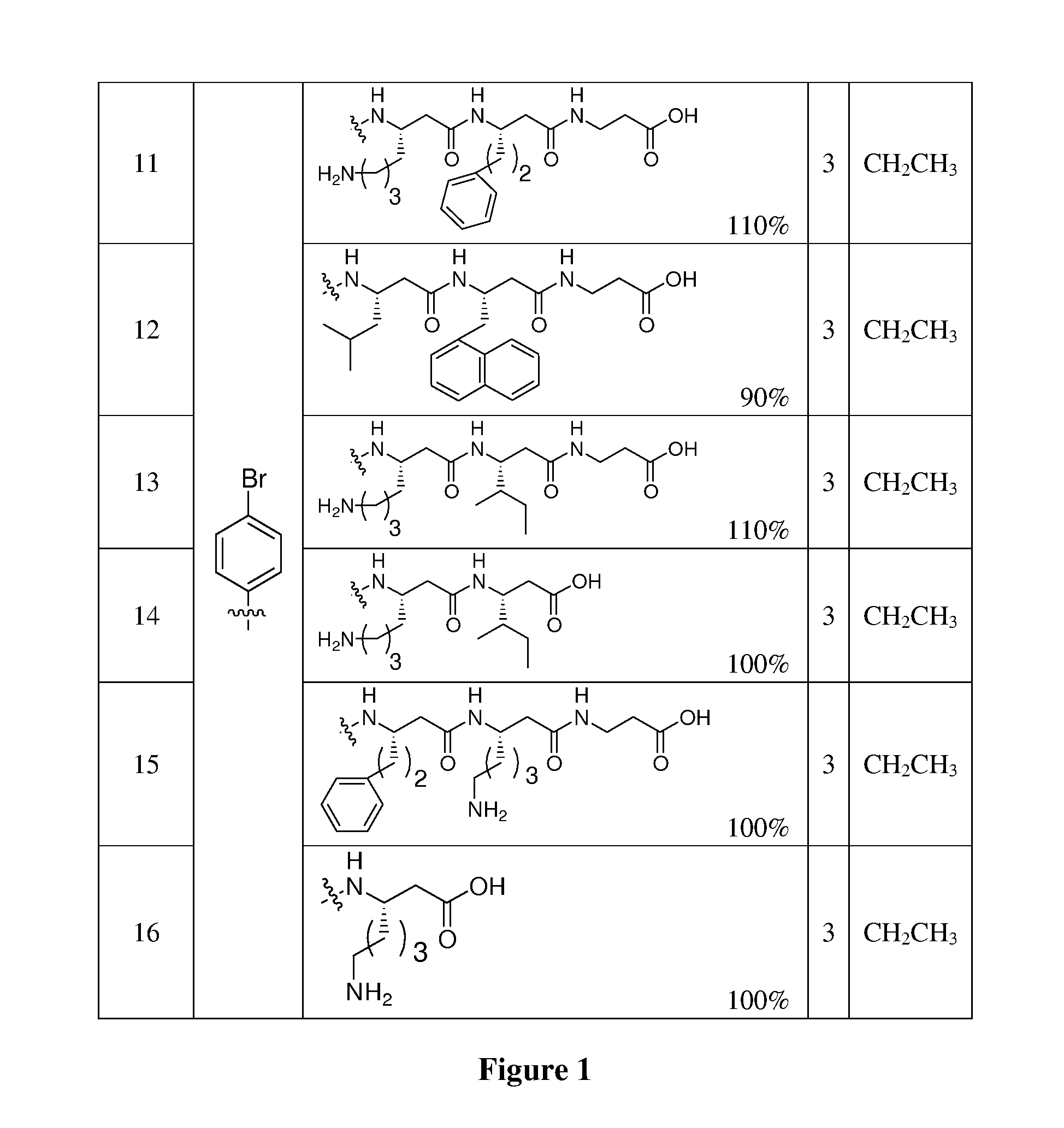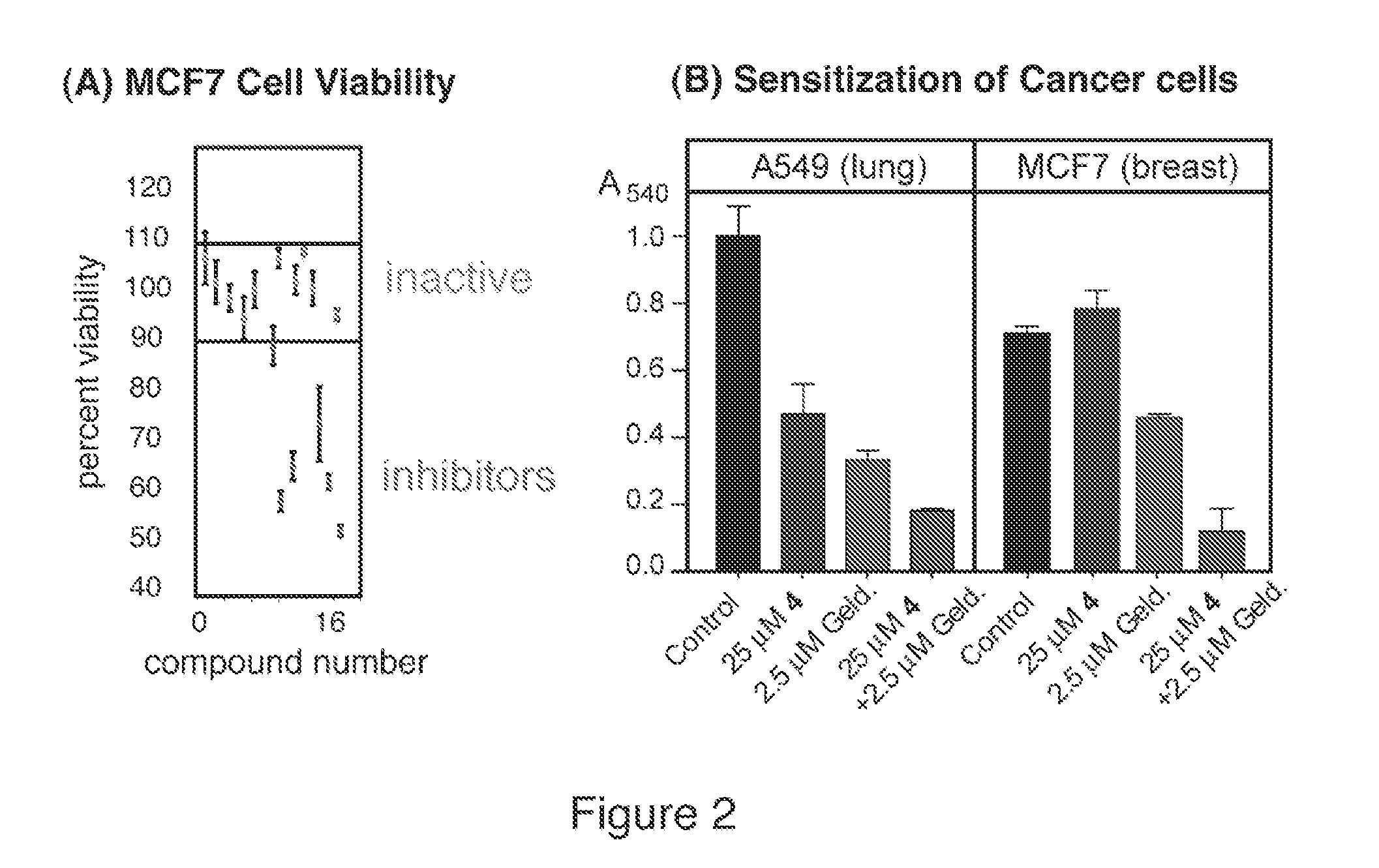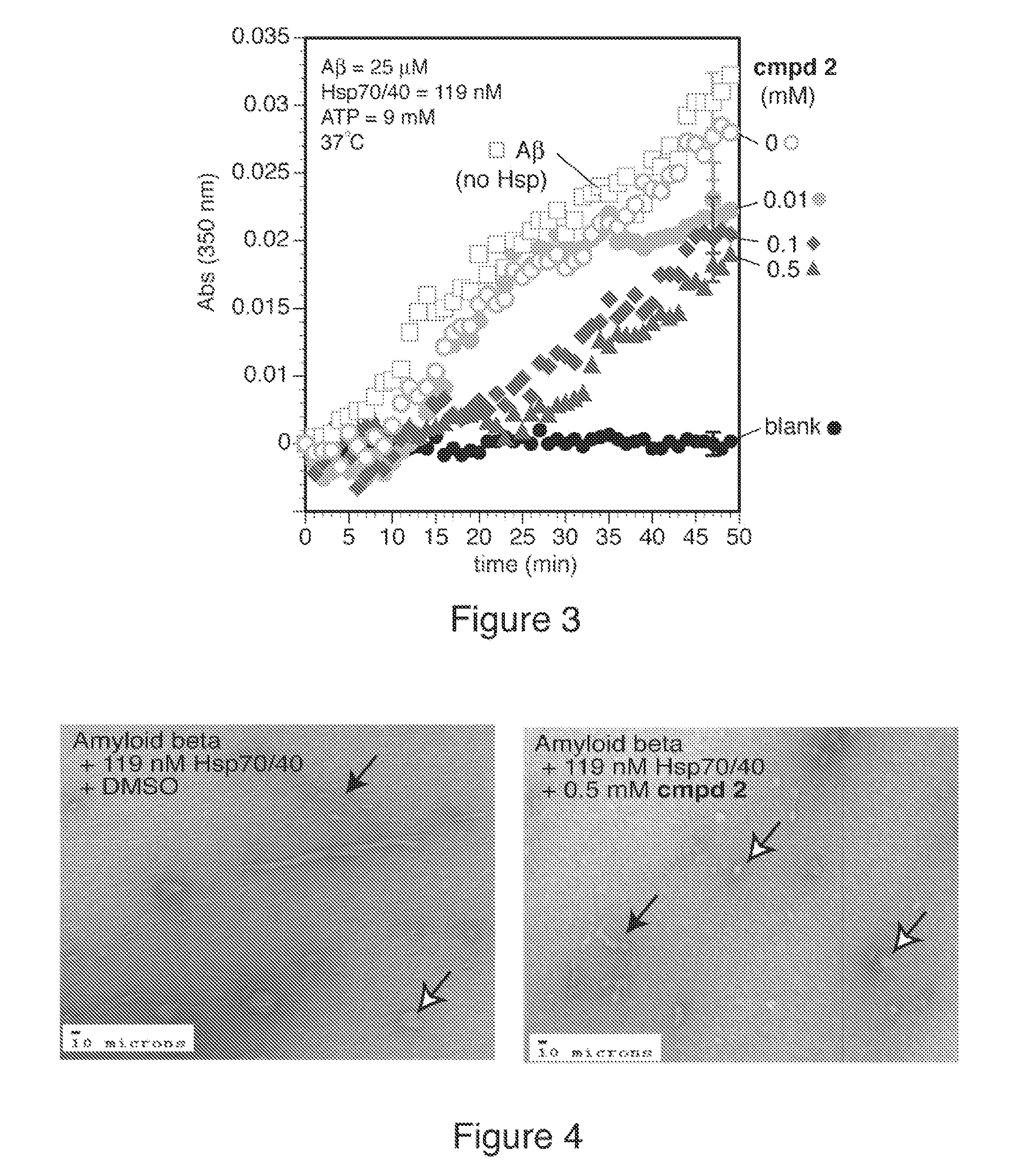Methods and reagents for activating heat shock protein 70
a technology of activating heat shock protein and reagents, which is applied in the direction of biocide, drug composition, peptide/protein ingredients, etc., can solve the problems of unsatisfactory current chemotherapy, unfavorable treatment of the majority of patients diagnosed with cancer, and inability to fully effect a therapeutic agent that acts on one molecular targ
- Summary
- Abstract
- Description
- Claims
- Application Information
AI Technical Summary
Benefits of technology
Problems solved by technology
Method used
Image
Examples
example 1
Solid Phase Synthesis of Compounds of Formula (I)
[0075] Wang resin (100-200 mesh), Fmoc-beta-amino acids and reagents used in peptide synthesis were all purchased from Anaspec Inc. All solvents were purchased from Sigma. Microwave reactions were carried out in a Biotage Initiator EXP. The masses of the purified compounds were confirmed by Micromass LCT Time-of-Flight mass spectrometer with electrospray and APCI. All 1H NMR spectra were recorded on Varian or Bruker spectrometers (500 MHz) in dDMSO.
[0076] As an example of the library synthesis: Fmoc-beta-alanine (10 eq.) was dissolved in dry CH2Cl2 and activated with 5 eq. EDC at 0° C. for 30 min. The CH2Cl2 was removed under reduced pressure and the activated amino acid was dissolved in DMF. The solution was coupled to Wang resin (swelled in DMF) with of 0.1 eq DMAP. The mixture was stirred at room temperature for 2 h. The coupling efficiency of the first residue (Fmoc-β-Ala) was determined from the equation: Fmoc loading (mmole / g)...
example 2
Luciferase Refolding Studies
[0078] Firefly luciferase (Promega), 0.5 mg / mL, was denatured in Buffer A (25 mM Hepes-KOH, pH 7.2, 50 mM KAc, 5 mM DTT) containing 6 M guanidine hydrochloride (GuHCl) at room temperature for 60 min. The denatured protein was placed on ice for 10 min and diluted 1:40 in Buffer A before refolding. Refolding was initiated by adding 10 mL luciferase into 240 mL refolding buffer (28 mM Hepes-KOH, pH 7.6, 120 mM KAc, 1.2 mM MgAc, 2.2 mM DTT, 1 mM ATP, 8.8 mM creatine phosphate, 35 U / mL creatine kinase, including 15 mL rabbit reticulocyte lysate (RRL) (Promega) and compounds 1-16 (0, 1, 10, 100 mM)). At time intervals of 5 to 10 minutes, 2 mL of the refolding mix was removed and added to 98 mL luciferine solution (0.15 mg / mL luciferine in 25 mM glycylglycine, pH 7.8, 15 mM MgSO4, 5 mM ATP, 2 mM DTT). The progress of refolding was then monitored by immediately measuring luminescence in 96-well, black, flat-bottomed, non-treated, plates (Coming) in a SpectraMax ...
example 3
MTT Cancer Cell Viability Assay
[0079] Geldanamycin was obtained from A.G. Scientific, Inc. and the tumor cell lines, A549 (lung) and MCF7 (breast carcinoma), were kind gifts from Dr. Steve Weiss. Cells were maintained in Dulbecco's Modified Eagle's Medium supplemented with 10% fetal bovine serum and antibiotics (100 units / ml penicillin G, 100 μg / ml streptomycin) (Gibco / BRL Life Technologies, Inc., Rockville, Md.) at 37° C. and 5% CO2. Cells were plated in 96-well plates at 5,000 cells per well. After 24 and 48 h. the cells were treated with compound 4 at concentrations 25, 50 or 100 mM, geldanamycin (2.5, 5 or 10 mM), or a combination of compound 4 and geldanamycin. All compounds were dissolved in DMSO and the final concentration of DMSO after addition of drug was 2%. All experiments were performed in triplicates with DMSO as a reference. On day 3 after the first treatment, the medium was removed and the cells were treated with MTT (3-(4,5-dimethylthiazol-2-yl)-2,5-diphenyltetrazol...
PUM
| Property | Measurement | Unit |
|---|---|---|
| Composition | aaaaa | aaaaa |
| Therapeutic | aaaaa | aaaaa |
| Heat | aaaaa | aaaaa |
Abstract
Description
Claims
Application Information
 Login to View More
Login to View More - R&D
- Intellectual Property
- Life Sciences
- Materials
- Tech Scout
- Unparalleled Data Quality
- Higher Quality Content
- 60% Fewer Hallucinations
Browse by: Latest US Patents, China's latest patents, Technical Efficacy Thesaurus, Application Domain, Technology Topic, Popular Technical Reports.
© 2025 PatSnap. All rights reserved.Legal|Privacy policy|Modern Slavery Act Transparency Statement|Sitemap|About US| Contact US: help@patsnap.com



